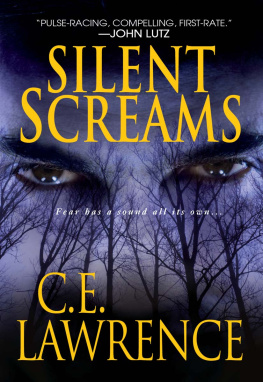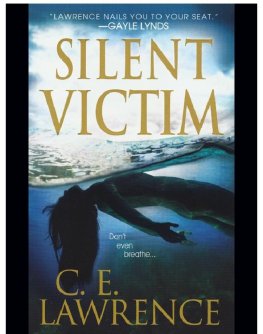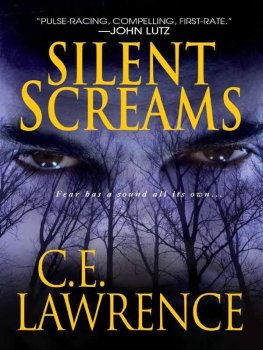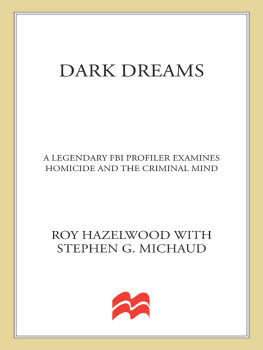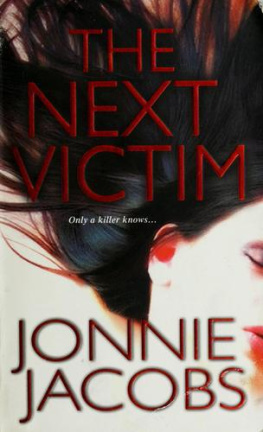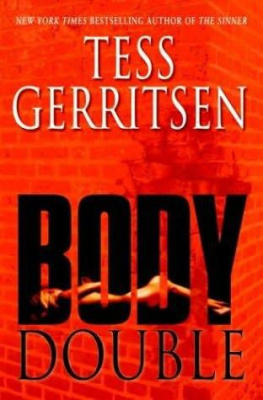Thanks first and foremost to my editor, Michaela Hamilton, whose vision, wisdom and insight proved invaluable throughout the rewrite process. Thanks also to my agent, Paige Wheeler, for her unfailing good cheer and support, and to Dr. Lewis Schlesinger, a fine teacher whose excellent course in criminal psychology at John Jay College for Criminal Justice was essential to my research. Thanks to my colleague Marvin Kaye for his support and friendship, and special thanks to Gregg McCrary, for his invaluable advice and generosity. Special thanks also to Robert Murphy and Rachel Fallon for providing the ideal retreats in which to workand to Fred and the other fine folks at the Long Eddy Hotel for the delicious sustenance during the long rewrite process. My deepest gratitude to the Byrdcliffe Arts Colony in Woodstock, New York, for the five years I spent in my beloved cabin, Varenka. It is the happiest place I have ever lived. Thanks too to Haw-thornden Castle International Writers Retreat for providing a wonderful month in the most idyllic setting I can imagineand to Martin, Angie, Mary and Doris for putting up with me. Thanks and gratitude to Chris Bugg for bailing me out of a tight spot, to Beth Andrasak for her insight and friendship, and to Susan Schulman for her patience and continued support. Thanks to my mother and Joan Lawrence for their insightful feedback, to Anthony Moore for his companionship and advice, and to NYPD Detectives Joseph Cavitolo and John Sweeney, as well as civilian NYPD liaison John Kelly, for their patience and professional advice. Last but far from least, my deepest gratitude to Amanda George for her guidance and willingness to shepherd me through a very dark forest.
Chapter One
Lee Campbell stood looking at the naked body draped over the altar of the church. The girls delicate white skin was pale as the cold marble floor beneath his feet, in stark contrast to the vivid red wounds slashed across her torso and the purple bruising around her neck.
Come on, Marie, talk to me, he whispered. He bent down over her, looking for petechial hemorrhaging in or around the eyes, but could find none. The lack of patterned abrasions meant there had been no ligature. So he used his hands, he murmured. Some strangulation victims had no sign of injuries at all, so he was grateful for the bruising around her neckpronounced enough to suggest that this, and not the slash wounds, was the cause of death. He thought about what her last moments were like: eleven pounds of pressure for ten seconds could cause unconsciousness, and thirty pounds of pressure, for four or five minutes, would result in death.
He observed the blue creeping into her lips, the porcelain smoothness of her dead cheeks. At least he left her face alone . He had always found it odd that strangulation victims sometimes looked strangely peaceful, with all of lifes pain, suffering, and uncertainty behind them now. Lee felt a stab of envy in his stomach, and a warning sounded in his head. He could not allow himself to linger over such thoughts. He closed the door of his mind to the desire to be where this dead girl was now, to be done with the mad dance of life and its many trials.
But, of course, there had been nothing peaceful about her death. His eyes fell on the jagged letters carved into her naked torso: Our father who art in heaven . The O encircled her left breast like a red halo, the blood droplets symmetrical on her pale flesh. For some reason, he was reminded of a red and white hula hoop his sister had as a child. The writing was uneven and slanted downwarda job done in haste, he concluded, by a killer who was not yet comfortable with this part of his work.
The blood had dried and was caked in little mountainous crusts of crimson on her pale skin. The word Heaven was cut into her abdomen, just over the light dusting of dark pubic hair on her pelvis. There was little excess blood around the altar, and no signs of struggle, suggesting that she was killed elsewhere.
What happened to you? Lee whispered. Who did this to you? Even at a whisper, his voice echoed and fluttered, ghostlike, through the tall stone columns of the chapels interior. Lee had never been on the Bronx campus of Fordham University before, and he was surprised by the size of the campus chapel. But then, Fordham was a Catholic schoolin fact, the college seminary was just across the quad.
Lee studied the dead girls face, waiting for the eyes to flutter open, and realized with a start that she resembled his sisterthe same curly dark hair and white skin. He had often imagined seeing Laura like this, wondering what he would do or say, but her body had never been found. And so that encounter hung in suspended animation, waiting for him in some near or distant future. He looked down at Marie, cold and unmoving upon the altar, not a line creasing her smooth cheeks, her youth a rebuke to the person who had squeezed the life from her body. Lee was relatively new to such intimacy with the dead, and it held a fascination he knew was not entirely healthy.
But Leonard Butts, the Bronx detective assigned to this case, had no such fascination, nor was he of a sentimental turn of mind.
Okay, Doc, he said, approaching Lee. You bout done there? MEs here, and wed like to get the vic downtown ASAP.
Butts indicated several men unloading a stretcher from a van outside the chapel. Lee could see the words MEDICAL EXAMINER in large yellow letters emblazoned on the backs of their dark blue jackets as they brought in the stretcher, its wheels clacking on the stone floor. A couple of members of the forensics team glanced up briefly, then went on with their workdusting, photographing, inspecting. They worked with swift, practiced gestures, moving smoothly through the crime scene, gathering evidence. A thin young Asian woman snapped photographs of Marie from every angle, her face set in a stoic, businesslike expression.

